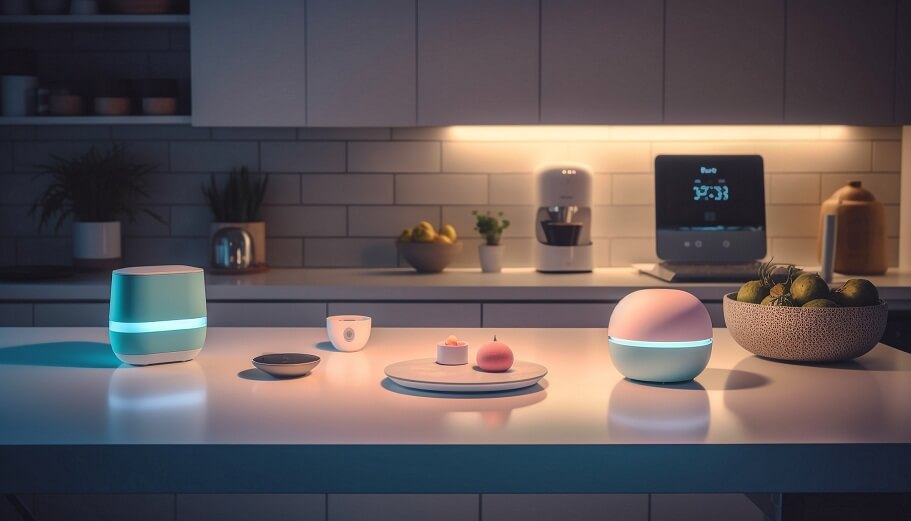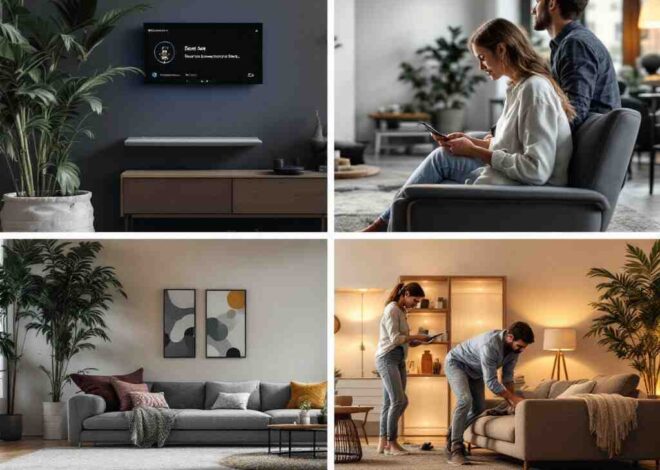
How Can I Integrate Smart Home Technology into My House?
The concept of a “smart home” has become increasingly popular in recent years. Smart home technology refers to devices and systems that can be controlled remotely via smartphones, voice assistants, or other connected devices. The goal is to automate and improve everyday tasks like controlling lighting, temperature, appliances, security systems and more. With smart home technology, you can make your home more convenient, comfortable, secure and energy-efficient. This comprehensive guide will provide you with everything you need to know to successfully integrate smart home technology into your house.
Understanding Smart Home Technology
Smart home technology includes a network of connected devices, sensors, and controllers that work together to automate and control various home functions. At the center of most smart home setups is a smart home hub or controller. This acts as the central processor that connects and controls all of the smart devices. Some of the most common smart home devices include:
- Smart thermostats – This allows you to control home temperatures remotely via smartphone. Many can also learn your schedule and adjust temperatures automatically.
- Smart lighting – Smart light bulbs and switches that can be controlled and automated through a smartphone app or voice assistant. Many also offer customizable colour options.
- Smart door locks – Keyless locks that can be locked/unlocked and monitored remotely via smartphone. Some even allow granting virtual guest access.
- Smart security cameras – Security cameras that connect to your home WiFi to allow remote viewing and real-time notifications via smartphone.
Having a central smart home hub is crucial for integrating these devices. The hub connects all the devices and allows you to control them from one place.
Planning and Preparation
Before rushing off to buy the latest smart home tech, it’s important to do some planning and preparation. Here are some tips:
- Evaluate your current home infrastructure and identify areas for improvement. Look for older devices and appliances that could be upgraded.
- Determine your budget for smart home technology. The costs can add up quickly. Prioritize the most important features.
- Make a list of the specific smart home devices and features you want. Focus on devices that work with your existing systems.
- Check that you have a strong WiFi router that can handle multiple connected smart devices. Upgrade if needed.
- Consider starting with a few key devices like smart lighting or a smart thermostat. You can expand from there.
- Read reviews and research to find the most user-friendly smart devices. Look for flexibility and integration options.
Choosing the Right Smart Home Devices
With so many options for smart home gadgets, choosing the right devices can be tricky. Here are some factors to consider:
- Compatibility – Ensure any smart devices you select are compatible with your existing systems and the central hub controller you plan to use.
- Ease of use – Look for smart devices that are simple to operate through straightforward apps and voice controls. Avoid gadgets with complex programming.
- Features – Determine which specific smart device features are most useful for your home. Don’t overpay for unnecessary bells and whistles.
- Price – Smart home tech can range greatly in price. Set a reasonable budget and look for sales on more expensive items.
- Reviews – Check reviews to see real customer experiences with a smart device. Look for consistent praise and good ratings.
Some of the most popular and practical smart home devices include:
- Smart thermostats like the Nest or Ecobee for temperature control.
- Smart lightbulbs and switches from Philips Hue or LIFX for lighting automation.
- Video doorbells and security cameras like Ring or Nest Cam for home monitoring.
- Smart locks such as August or Yale for keyless entry.
Integrating Smart Home Devices
When installing multiple smart home devices, you’ll need to connect and integrate them into one cohesive system. Here are some tips:
- Most smart home devices connect via WiFi, Bluetooth, or Zigbee. Choose devices that work with your home’s setup.
- The smart home hub acts as the central device for integrating all smart gadgets. Leading options include Samsung SmartThings, Amazon Echo Plus, and Wink.
- Ensure any smart devices you select are compatible with your hub. Check the hub requirements before purchasing new smart gadgets.
- During setup, connect smart devices to your WiFi network and link them to your smart home hub via the hub’s app. Follow the step-by-step process for each gadget.
- Group and categorize your connected smart devices within the hub app (e.g. by room) to easily control them.
Setting Up and Configuring Smart Home Devices
Once you’ve purchased compatible smart home devices, proper setup and configuration is crucial. Follow these steps when installing new gadgets:
- Create accounts for each device’s accompanying app. Write down your login details for each.
- Connect the smart devices to your WiFi network using the device apps or instructions.
- Link the smart devices to your smart home hub by scanning codes or using the hub app.
- Personalize and configure device settings like voice commands, schedules, notifications, etc.
- Set up strong unique passwords and enable two-factor authentication for all apps and accounts.
- Configure any advanced rules like lighting changes, temperature schedules, camera motion settings, etc.
- Set regular software updates to automatically install and maintain optimal performance.
- Mount and position devices like cameras, motion sensors, and door locks properly around your home.
Advanced Smart Home Features
Once the basics are set up, there are many advanced features to explore:
- Voice control – Controlling smart devices via voice commands improves convenience. Alexa and Google Assistant work with most smart gadgets.
- Automation – Configure rules like lights turning on at sunset or blinds closing when you leave the house.
- Remote access – Monitor and control smart devices when away from home via smartphone.
- Activity alerts – Receive notifications when motion is detected or doors are opened for added security.
- Smart integration – Connect smart devices for automated responses. Like a smart speaker announcing when the front door opens.
- Energy efficiency – Smart thermostats and lighting can be programmed to optimize energy usage and save money.
The options for advanced smart home integrations are virtually endless. Start with the features that are most useful and convenient in your daily life.
Conclusion
The world of smart home technology provides innovative ways to add convenience, comfort, and security to your home. With proper planning and research, you can successfully integrate the latest smart gadgets into your existing home infrastructure. Focus first on the devices and features that suit your needs and budget. As your smart home grows, the possibilities for advanced integrations and automation will multiply. Approach smart home technology as an exciting journey rather than just a one-time project. In no time, you’ll be living in an incredibly intelligent home tailored to your lifestyle.
You may also read (saving money on smart home installation)

